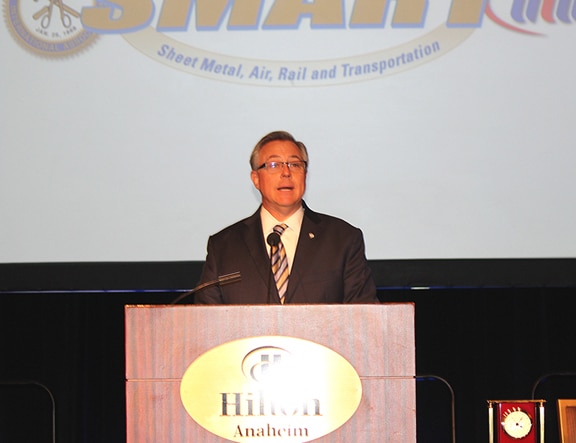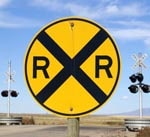
“Safety is our top priority,” said U.S. Transportation Secretary Anthony Foxx. “While 2012 was the safest year in rail history, we are constantly reviewing our work to ensure the public’s safety on our nation’s rails and value the important input we are receiving from industry stakeholders.”
The RSAC is a technical and policy stakeholder advisory group that makes recommendations to the FRA on rail safety issues, and includes representatives from every facet of the rail industry. The issues discussed at the meeting included the safety requirements contained in FRA Emergency Order No. 28 (EO 28) and the recommendations made in Safety Advisory 2013–06, both issued on Aug. 2.
EO 28 is a mandatory directive to railroads requiring them to undertake a number of immediate actions to ensure that trains transporting hazardous materials (hazmat) are secured and not left unattended. The directive also includes communication requirements. Failure to comply with the emergency order requirements will result in enforcement action.
The safety advisory contains recommendations issued jointly by FRA and the Pipeline and Hazardous Materials Safety Administration (PHMSA) to railroads and hazmat shippers, including requiring railroads to review their crew staffing requirements for transporting hazardous material, conduct system-wide evaluations to identify hazards that may make it more difficult to secure a train or pose other safety risks, and develop procedures to reduce those risks. The advisory served as the agenda for today’s meeting. The implications as well as potential costs and benefits of new or expanded safety requirements and initiatives, including possible new RSAC tasks to implement them, were also discussed.
“Today’s meeting brings together some of the best and brightest minds our industry has to offer in order to tackle issues of paramount importance,” said FRA Administrator Joseph C. Szabo. “The dialogue will serve to build upon the comprehensive regulatory framework we already have in place, and allow us to further enhance safety by eliminating additional risk from the railroad system.”
During the meeting, RSAC members voted to accept four task statements on: appropriate train crew size; requirements for the securement of trains; operational testing for employees to ensure appropriate processes and procedures for securing trains are followed; and hazardous materials issues relating to the identification, classification, operational control and handling of such shipments in transportation. The RSAC will now establish working groups with the necessary expertise to examine each task, gather relevant facts, and develop a range of options. The recommendations of those working groups will be presented to the RSAC by April 2014.
“As greater quantities of hazmat are transported by rail and other modes, the risks increase and we have to make sure our regulations are keeping pace with market and technology forces,” said PHMSA Administrator Cynthia Quarterman. “We have to work together to identify gaps, be willing to acknowledge them and close them.”
Under current U.S. Department of Transportation regulations, freight railroads are required to undertake safety and security risk assessments and implement procedures in order to transport certain hazardous materials, including creating a plan to prevent unauthorized access to rail yards, facilities, and trains carrying hazardous materials. Railroads that carry hazardous materials are required to follow established protocols while en route, and railroad employees are subject to background checks and must complete training. Railroad training programs and operating practices are reviewed and audited by the FRA routinely and are generally designed to be progressive so that as the level of risk increases, so does the level of safety and security required.


 The Federal Railroad Administration June 3 issued a safety advisory on the importance railroad safety procedures to ensure the safety of the traveling public and railroad employees when highway-rail grade crossing warning systems and wayside signal systems are temporarily removed from service for purposes of testing, inspection, maintenance, or repair.
The Federal Railroad Administration June 3 issued a safety advisory on the importance railroad safety procedures to ensure the safety of the traveling public and railroad employees when highway-rail grade crossing warning systems and wayside signal systems are temporarily removed from service for purposes of testing, inspection, maintenance, or repair.